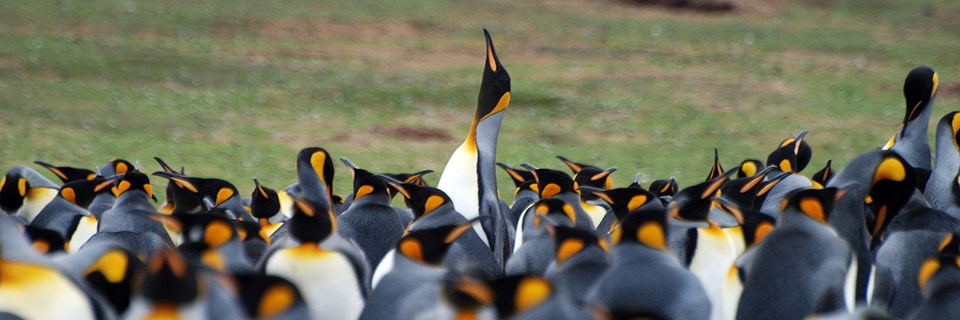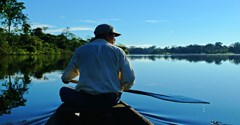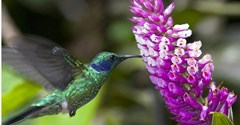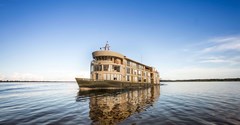Looking for your ideal wildlife holiday? Latin America is full of wonderful wildlife opportunities, discover ten of our favourite places to indulge your passion.
From colourful frogs and lovable sloths, to imposing whales, powerful crocs and prowling jaguars, a diverse cast of characters are waiting to be discovered in some unforgettable wildlife experiences in Latin America. Even better, they live side-by-side in jaw-dropping locations, such as tropical rainforests, sprawling wetlands and rugged coastlines - more and more of which are being protected for conservation. Under the guidance of local experts, you can enjoy this incredible range of wildlife, up close and personal in their natural habitats, on intimate, ethical and spectacular tours. The only question is - where will you go on your dream wildlife holiday?
Make reptile friends on the Galápagos Islands, Ecuador
The Galápagos Islands are not just the premier wildlife destination in Latin America, but they are arguably the best anywhere in the entire world. Where else can match the colour, diversity and beauty of these isles? Where else affords you almost unrestricted access to mind-boggling creatures, such as the colourful marine iguanas and Sally Lightfoot crabs that remain stubbornly indifferent to the presence of humans? There is a dazzling array of marine life waiting to be discovered just below the surface in the crystal-clear waters, whilst pelicans, penguins, flamingos, frigate birds, and the charming blue-footed booby further decorate the islands made famous by Charles Darwin in 19th century. The biggest attraction here though are the endangered giant Galápagos tortoises, many of whom live well past their hundredth birthdays, the bizarre mating dances of the waved albatrosses and blue-footed boobies and the chance to swim with sea lion pups.
The friendly wildlife isn't the only thing that makes the Galapagos Islands so popular with travellers, the dramatic volcanic islands are packed with beautiful red sand beaches, colourful flora and stunning coral.
Star attraction: Giant tortoises
Best time to visit: October to May
How to get there: Fly from Quito and Guayaquil
Where to stay: Range of boats, from large to intimate, to suit all budgets and tastes
Where next: Travel from Quito to Cuenca via the Avenue of the Volcanoes
Learn more about the Galapagos Islands
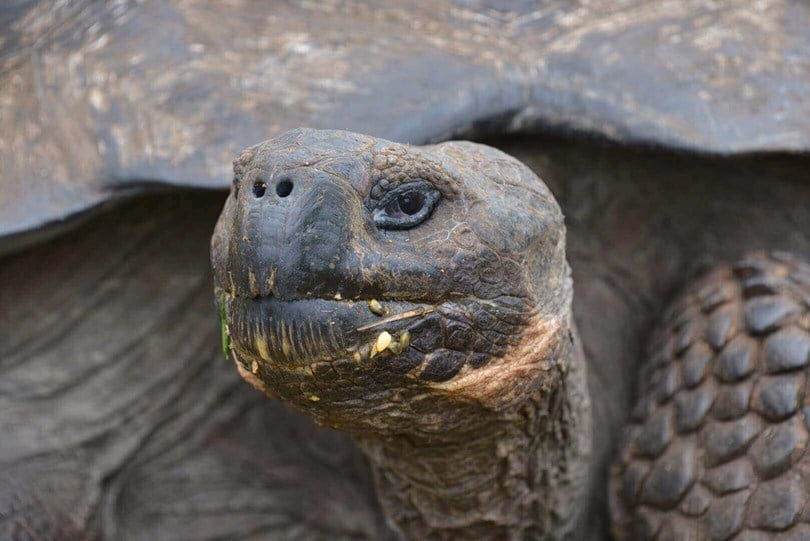
Spot the elusive jaguar in The Pantanal, Brazil
The largest wetlands in the world (between 50,000 to 80,000 square miles) are formed of lagoons, swamps and floodplains caused by the summer rain - creating the perfect habitat for the diverse range of wildlife that calls it home. Although it stretches into Bolivia and Paraguay, The Pantanal is best accessed in Brazil, where you travel by boat or 4x4, or walk, canoe and horse-ride around the wetlands, with your expert guide keeping their eyes peeled for signs of caiman, capybara, otters, monkeys and giant anteaters. Toucans and macaws lend a further splash of colour, whilst the open nature of The Pantanal stands in contrast to the dense forestation and thick foliage of the Amazon, meaning you stand a greater chance of spotting the elusive jaguar - a truly unforgettable experience.
Star attraction: Jaguars
Best time to visit: April to October
How to get there: Fly from Rio de Janeiro
Where to stay: Pousada do Rio Mutum, surrounded by wild animals in their beautiful grounds
Where next: To Rio de Janeiro or to Manaus for Amazon cruises
 Photo by Bart van Dorp
Photo by Bart van Dorp
Discover wildlife heaven in Corcovado, Costa Rica
The second most famous Corcovado in Latin America, but rather than brimming with tourists jostling for the best view of Guanabara Bay, this remote coastal national park on the Osa Peninsula is bursting with enough animals to impress even the most practiced wildlife observers. Jostling for your attention are sloths, toucans, colourful frogs, four types of monkeys, caimans, crocoidles, tapirs, pumas, jaguars, harpy eagles and impossibly beautiful ocelots and margays. The unspoilt tropical rainforests of Corcovado were described by the National Geographic Society as "the most biologically intense place on Earth" - the perfect home for one of the greatest concentrations of wildlife and fauna on the planet. A must for any nature aficionado.
Star attraction: Sloths
Best time to visit: November to April
How to get there: By road or by light aircraft from San Jose
Where to stay: Casa Corcovado is a private reserve on the edge of the park
Where next: The Arenal National Park and Monteverde Cloud Forest for more Costa Rican wildlife
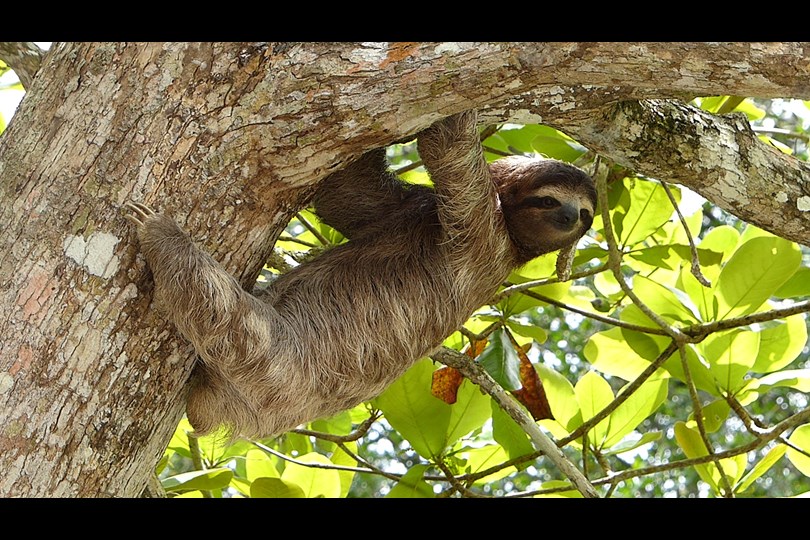
Watch baby turtles take their first steps at Tortuguero, Costa Rica
Tucked away on Costa Rica's Caribbean coast and reached only by boat or light aircraft, there is no doubting what the star attraction is here. However, there is more to this national park than the army of endangered Green Sea turtles which make Tortuguero their nesting grounds. Crocodiles, Indian manatees, howler monkeys, sloths, river otters, macaws, jaguars and tapirs also inhabit the protected area. Visitors come here though primarily for the turtles and if you time it right you might just get to experience the truly unforgettable sight of a newborn turtle clambering out of the sand and making its first perilous journey to the sea.
Star attraction: Green Sea turtles
Best time to visit: November to May
How to get there: By road or by light aircraft from San Jose
Where to stay: Tortuga Lodge, ideally located inside the national park and close to the airstrip
Where next: Head north to the Arenal Volcano and Monteverde Cloud Forest
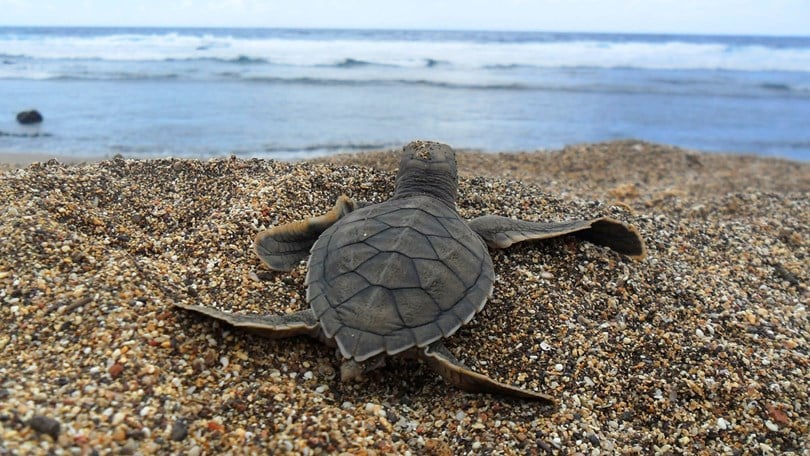 Photo by Oregon State University
Photo by Oregon State University
Photograph macaws in the Amazon Basin, Peru
The continuous green and brown tones of the incomprehensibly vast Amazon are interrupted by a riot of colour as macaws, toucans and parrots congregate on the clay licks which dot the region, illuminating the camera screens of excited travellers. Elsewhere shutters are fired in the direction of the sloping snouts of tapirs, the bushy tails of beautiful red squirrels and the wispy moustaches of tamarin monkeys. Powerful black alligators patrol the water and visitors are given the occasional glimpse of the sharp teeth, powerful paws and menacing stare of the reclusive jaguar.
Star attraction: Amazonian Macaws
Best time to visit: May to July
How to get there: Fly from Lima or Cusco
Where to stay: Tambopata Research Centre, built around its own macaw and parrot clay lick
Where next: Cusco, the Sacred Valley & Machu Picchu for the ultimate Peru experience
Learn more about the Peruvian Amazon

Canoe the waterways of the Iberá Wetlands, Argentina
Such is the diversity of Argentina, it actually offers three places on this list (it would be four if they had their way). This variety is equally prevalent in the largest protected area of the country; the Iberá Wetlands, which provides the perfect alternative to The Pantanal for those not venturing further north. This area in Northern Argentina stands on its own merit as offering one of the best wildlife experiences in Latin America. As well as a huge array of birdlife, the rainwater wetlands offer sightings of alligators, caimans and otters in the shallow waters, whilst maned wolves, marsh deer and monkeys dot the landscape. As do adorable capybaras - the largest rodent in the world, found almost exclusively in South America.
Star attraction: Capybaras
Best time to visit: April to October
How to get there: Fly to Posadas from Buenos Aires then travel by road
Where to stay: Puerto Valle Lodge ideally located on the edge of the wetlands
Where next: Iguazu Falls to the north and Buenos Aires to the south
Learn more about the Iberá Wetlands
 Photo by Papa Pic
Photo by Papa Pic
Take to the seas at the Valdes Peninsula, Argentina
Offering a very different experience to the wetlands in the north, the Valdes Peninsula is the playground of Southern Right whales, Magellanic penguins, elephant seals and sea lions. These are often joined by killer whales, making for dramatic boat trips full of gasps of awe and excitement. Albatrosses, petrels and cormorants patrol the vast Patagonian skies, whilst inland guanacos, armadillos and Patagonian cavies can be frequently sighted.
Star attraction: Southern Right whales
Best time to visit: September to March
How to get there: Fly to Trelew from Buenos Aires or El Calafate
Where to stay: The Territorio offers spectacular views over the bay from every room
Where next: El Calafate and the breathtaking Perito Moreno Glacier
Learn more about Valdes Peninsula
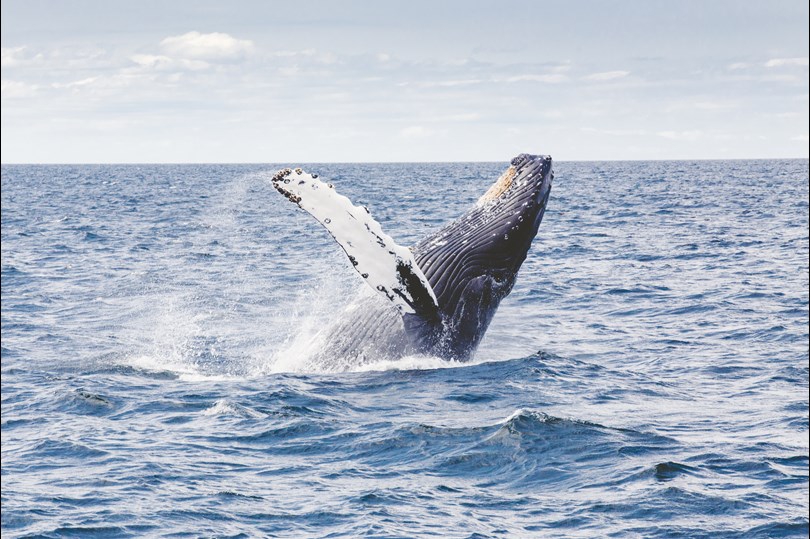
Meet the kings of the Falkland Islands
A bit of good old fashioned British birdwatching 8,000 miles from the UK and 300 miles off the coast of Argentina, but with a South American twist of course. Human inhabitants are outnumbered by penguins here by approximately 250 to 1, spread over seven different species (the birds not the humans), including the famous King penguins which swarm Volunteer Point in breeding season. Hopping between the islands of the archipelago reveals elephant seals, southern sea lions, dolphins, albatrosses, the native Falkland Streamer duck and the striated caracara bird, known in these parts as Johnny Rook.
Star attraction: King penguins
Best time to visit: October to March
How to get there: Fly from Santiago or Punta Arenas in Chile
Where to stay: Go island hopping for an authentic Falkland experience
Where next: The Falklands are a perfect extension to Chilean Patagonia or an Antarctica cruise
Learn more about the Falkland Islands
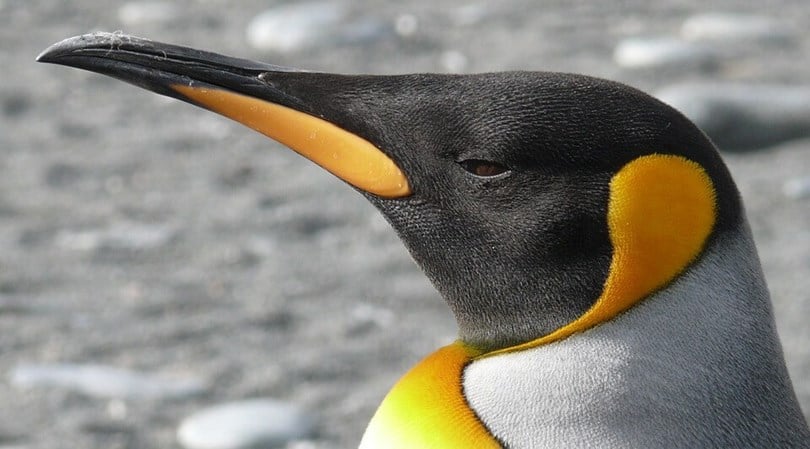
Stroke Grey whales in Baja California, Mexico
With its sprawling capital city, sleepy Colonial hillside towns, beautifully maintained Mayan ruins and pristine white sandy beaches, Mexico has everything a visitor could ask for - including exceptional wildlife experiences. Of these, the best is perhaps the whale watching opportunities on the Pacific coastline of Baja California. Thousands of giant Grey whales pass by, quite literally close enough to touch, on their yearly migration to Alaska, allowing visitors to get as close as possible to these majestic creatures for a memorable encounter. More than 300 bird species bring the skies to life whilst over 900 types of fish live alongside sharks, sea lions, dolphins, turtles and the aforementioned whales.
Star attraction: Grey whales
Best time to visit: November to May
How to get there: Fly from Mexico City
Where to stay: One & Only Palmilla for stunning ocean views
Where next: Mexico City and its nearby colonial towns
Learn more about Baja California
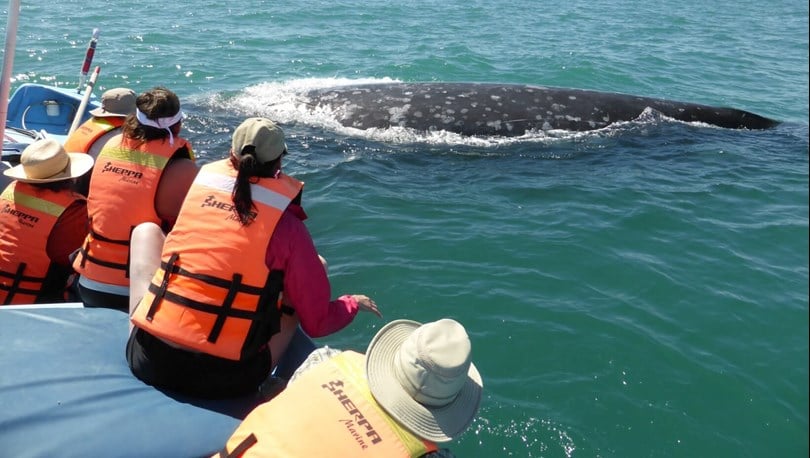 Photo by Michael R Perry
Photo by Michael R Perry
Snorkel in the crystal-clear waters of Belize
The Mesoamerican Barrier Reef is the second biggest of its kind anywhere in the world, behind only its more famous counterpart in Australia. It stretches for 560 miles from the Yucatán Peninsula in Mexico down to the edge of Honduras in the Caribbean Sea - just under 200 miles of which forms the Belize Barrier Reef. The reef offers some of the most outstanding snorkelling opportunities anywhere in the world, with over 500 different species of fish, 65 types of coral, 350 varieties of mollusks and 247 different types of colourful flora. It also boasts the largest concentration of Indian Manatees in the world, as well as rays, nurse sharks and bottlenose dolphins. One of the best places to experience such incredible beauty and diversity is Caye Caulker; a small limestone coral island located at the edge of the Barrier Reef and reached by boat from nearby Ambergris Caye.
Star attraction: Snorkelling with sharks
Best time to visit: December to March
How to get there: Boat excursion from Ambergris Caye
Where to stay: Mata Chica - set amongst pristine white beaches on Ambergris Caye
Where next: Head to the north of Belize to see the outstanding Mayan ruins of Lamanai
Learn more about the Belize Barrier Reef

Bonus: Discover dinosaurs in Patagonia, Argentina
Ok, before you get too excited no there isn't a secret dinosaur resurgence happening in deepest Patagonia. But for animal lovers, particularly the pre-historic kind, Patagonia is the dinosaur capital of the world, with the town of Trelew known best for its magnificent paleontology museum. In fact potential new dinosaurs are still being discovered here, with the bones of the terrifyingly named Titanosaurian found lying around in Patagonia in 2015. Quite how something that large goes undiscovered for so long is another question - perhaps one that you could find an answer to on your travels in South America.
Star attraction: Dinosaurs!
Best time to visit: September to March to combine with Valdes Peninsula
How to get there: Fly from Buenos Aires or El Calafate
Where to stay: The Territorio just outside Puerto Madryn - an hour's drive
Where next: Puerto Mandryn for some very much living wildlife on the Valdes Peninsula
Learn more about Puerto Mandryn
Better with experts
Travelling in Latin America can sometimes be a challenging and unpredictable undertaking for even the most well-versed globetrotters. With our vast experience and expertise, Veloso Tours will carefully create the perfect itinerary for you, handling all the tricky logistics, negotiating the best prices, liaising with local suppliers and ensuring everything flows perfectly during your time in Latin America. All you have to do is decide where to go! Our collection of expert local guides will help bring these wonderful places to life. They'll give you their insider knowledge and offer an authentic and personal perspective that will leave you informed and inspired.
The Veloso Tours website has all the ideas and inspiration you'll need to get you started on your Latin American adventure. Our expert staff would be delighted to work with you to craft an unforgettable journey, full of memories that last a lifetime. Get in touch today and start planning your dream trip with Veloso Tours.
Choose your perfect holiday
Find inspiration from our selection of itinerary suggestions, a great starting point for your next trip
View More Tours
Stay in touch
Infuse your travels, with inspiration from our monthly newsletter.
READY - 20 April 2024
LANDMARK TOURS: Multi-Country & Cross Continent. New Cosmopolitan Tour: Buenos Aires, Iguazu, Rio
CHINA & INDIA: Local Life, People & Unique Cultures
GUIDES by Veloso Tours, are the best Local Hosts
PRIVATE VILLAS: Quality Time in exclusive settings
TRAVEL INSURANCE with extensive COVID-19 cover
